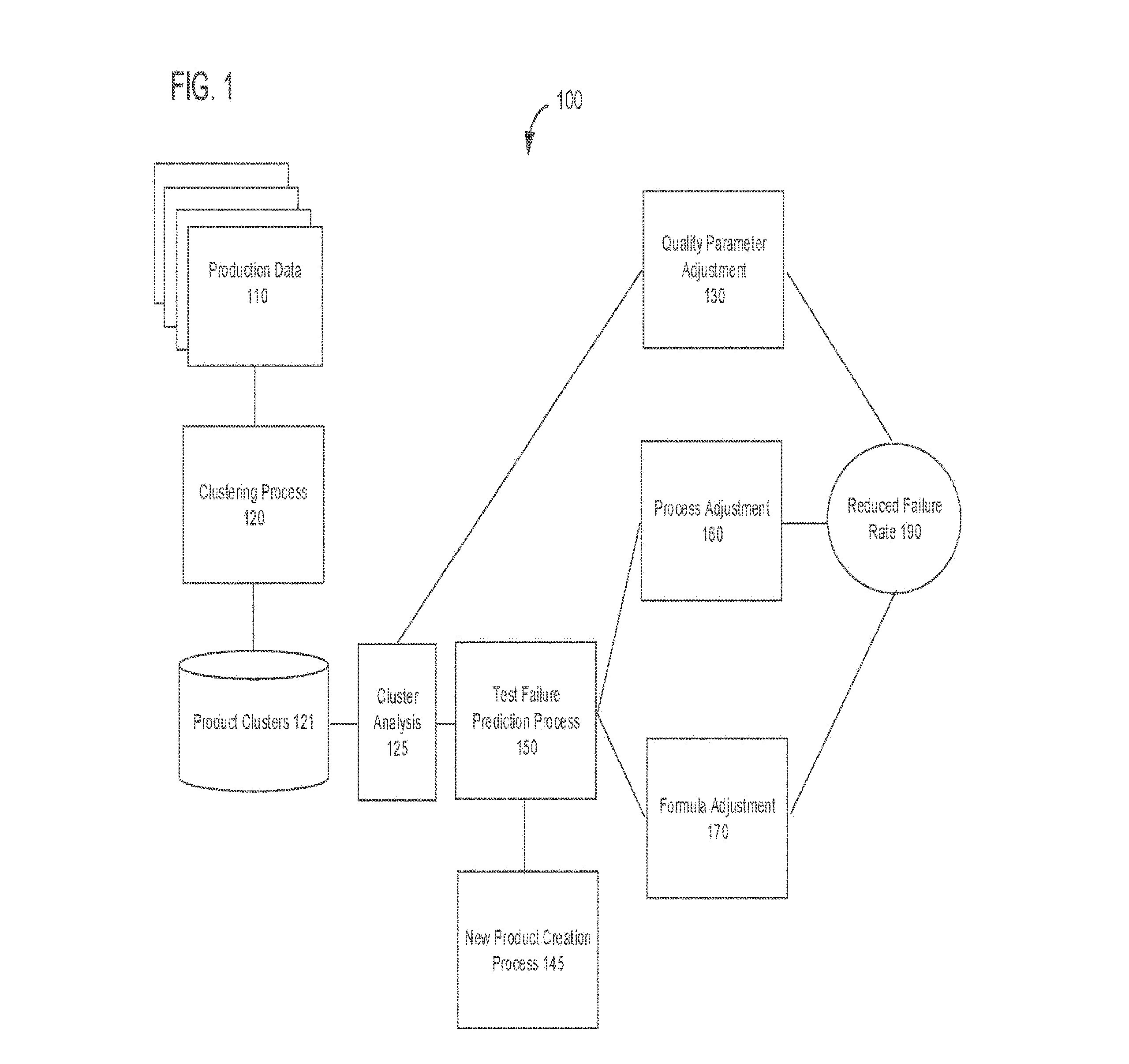PATENT DROP: Microsoft’s Unquenchable AI Thirst
Happy Monday and welcome to Patent Drop!
This morning, we’re diving into a patent by Microsoft that might be the next iteration of its AI workplace tech as it keeps pace with the rapid AI race. Plus, we’re taking a look at Palantir’s new tactic to keep manufacturers in line, and Sony’s tool to get people to safety during wildfires.
Before we get into it, a quick word from our sponsor, Blendid — the humans pioneering healthy food on-the-go via autonomous robotic food kiosks. Plagued with worker shortages and skyrocketing prices, the $300B quick-serve food industry is struggling. But Blendid is outfitting colleges, Walmarts, travel stops, and more, with kiosks to make nutritious food affordable and efficient. There’s only one month left to invest — secure your spot at the table before they go nationwide!
Let’s check it out.
#1. Microsoft’s AI butler
The AI race is on, and Microsoft is putting on its best running shoes.
The company filed a patent application for a “self-learning digital assistant.” Essentially, this tech improves current digital assistants or smart devices by implementing what the filing calls a “learning mechanism”… or as it’s more commonly known: machine learning. This tech monitors user activity “related to one or more devices” – such as message, location, and search data– to be able to better respond to user requests.
Think of it like a train-it-yourself device: If it receives a request it can’t complete the first time, it will learn your habits and be better able to complete it the next time that request is asked. For instance, if a user asks this device to turn on the lights, but the device is unable to complete this command the first time it’s asked, the system will monitor user behavior so that it can turn on the lights the second time it’s asked.
“Often these computing devices (or their digital assistant applications) are unresponsive to the user’s commands because they do not know how to carry out a task associated with the command,” Microsoft said in its filing. “In such instances, these smart devices do not seem smart at all, and leave users feeling frustrated.”

Microsoft hasn’t exactly been quiet about its AI work lately. For starters, the company unveiled its AI-powered Bing search and Edge browser in February to mixed reviews and beta testers reporting unsettling experiences. Just last week, the company announced 365 Copilot, which integrates AI-powered tools into programs like Word, Excel, and Teams.
This patent application, filed in November, could be part of the next iteration of Microsoft’s AI tools. While this application goes into detail on the way the tech could be used in the context of your home, Microsoft’s bread and butter is tech for enterprises, so there’s nothing stopping the company from integrating the tech from this patent as another value add for the 365 suite.
For example, you could command this to write an email to a colleague or create a document for a project, even if it couldn’t complete the task the first time, the system could watch and learn. Jake Maymar, VP of Innovation at The Glimpse Group, told me that integrating machine learning in the way this patent suggests could make the average user more open to AI in the day-to-day.
“Think of it like spellcheck: it gives you suggestions, and sometimes it just automatically fixes things,” Maymar said. “I think that’s what’s going to happen with all of AI integration. You’re going to just work the way you normally do, but you’re going to have these options for things that make your life easier.”
One key factor could put big tech companies like Microsoft far ahead of smaller tech firms in the AI race, Maymar said, and that’s its access to massive stockpiles of data. The more data a company has, the more sophisticated it’s AI can be.
“It’s really all about data,” Maymar said. “Microsoft has been very smart about how it has access to a tremendous amount of data in places that you may not realize.”
#2. Palantir’s factory play
Palantir wants to find the flaws in the production line.
The company filed a patent for tech aiming to reduce “manufacturing failure rates” using data analysis. It works like this: the system clusters manufactured products together based on “similarities in their production data,” such as their formulas, and are analyzed to determine common denominators in manufacturing mishaps, with the system suggesting changes like “test quality parameters, product formulas, and product processes.”
Using this method, Palantir will take this data and be able to predict “success rate,” thus allowing it to identify – and limit – failure before it happens. Clustering similar items together also allows for data collection among smaller data sets.
“Under conventional approaches, analysis of manufacturing formulas and processes may be difficult to perform due to a lack of data,” Palantir said in its filing. “When manufacturing rates for a particular product are low, there may not be enough data to perform a proper analysis of failure rates and causes.”

A key problem manufacturers face is not being able to reduce failure rates for smaller product batches, Sam Cooper, marketing consultant at AI platform SentiSight, told me.
The current industry standard in manufacturing is computer vision defect detection, he said, which requires massive product batches to properly train a program to learn a common problem and spot it when it comes up. Palantir’s tech will likely best be put to use by larger companies that manufacture a variety of small-batch items. These companies have the resources and product volume to cluster together similar products, whereas smaller manufacturers likely wouldn’t.
“By grouping similar items together into clusters, the analysis of manufacturing processes can be made more general, increasing the scalability and usability of these analytical methods,” said Cooper.
Palantir’s foothold in the manufacturing market is niche, but this patent application has less to do with manufacturing and more to do with the company’s major business: data analytics, Rhonda Dibachi, founder and CEO of manufacturing-as-a-service company, HeyScottie, told me.
If Palantir can sell the tech in this patent to major manufacturers, it’s likely to gain access to massive sets of data, which can be helpful in training – you guessed it – it’s AI and machine learning models.
“It’s really a patent for Palantir to use to aggregate lots of small machine-data-sets and make them into lots of big machine-data-sets.” Dibachi said. “The more big data sets (Palantir) can play with, the more they can apply AI to them and therefore, the more software they sell.”
#3. Sony’s fire fighter
With climate change making wildfires bigger by the year, Sony wants to lead you through the flames.
The company is seeking to patent tech for “providing wildfire evacuation support.” The system works by first collecting sensor data from a drone that tells the system where a wildfire is and where it’s spreading. The drone then determines the location of the individual or group that is in need of evacuation and finds the safest possible evacuation route for them based on factors like mode of transportation, open or blocked roads, and proximity to the fire.
After the route is determined, the drone then guides the group to safety. In situations where there are multiple groups trapped, multiple drones are deployed, with one drone per individual group that’s trapped.
“Humans trapped in a wildfire may have slim chances of escaping by themselves, given that it is often difficult for a person located within a wildfire to perceive the extent and development of the wildfire,” Sony said in its filing. “While there are systems for detecting and monitoring wildfires and for guiding firefighters into a wildfire, there is no system for safely guiding individuals out of a wildfire.”

Natural disaster tech goes beyond the gadgets you need in an emergency preparedness kit: Tech to track and predict things like wildfires, floods, tsunamis and heat waves is quickly getting more sophisticated as climate-related tech continues to develop. As the frequency of extreme weather events caused by climate change worsens, tech like this is becoming more and more necessary.
“With (the) increasing impact of climate change, wildfires are expected to be more prominent in these and other regions around the world,” Sony said in its application.
Sony is far from the only company working on this. Roughly a quarter of all VC funding went towards climate tech initiatives in 2022 according to PwC, as startups and investors alike saw the potential and need to stymie the worsening problem. Meanwhile, among big tech companies, Nvidia is working on AI that can accurately forecast extreme weather events, and Northop-Grumman created a tracking satellite that can help predict and prepare for extreme storms, which was launched in partnership with NASA and the National Oceanic and Atmospheric Administration in November.
While many climate tech firms are pushing to stop global warming in its tracks so that these disasters don’t get worse, Sony and others are working triage, seeking to mitigate harm amid the disasters many communities are facing in the present.
Extra Drops
We’re not done yet, folks.
- Apple wants to keep your car intact. The company is seeking to patent tech for “detecting cracks in windows,” which, exactly as the name implies, senses and notifies users of cracks in car windows. This might be a feature of the company’s hush-hush work on its Apple Car.
- Meta wants to be easy on the eyes. The company wants to patent tech for “alleviating eye fatigue” in AR and VR environments, adding to its pile of patent applications for tech to make you as comfortable as possible in the metaverse.
- EBay wants to make sure that Coach bag you’re bidding on is legit. The company is working on a “counterfeit item detection system” which uses machine learning to look for irregularities in listings.
What else is new?
We’re not done yet, folks.
Amazon is cutting another 9,000 employees, adding to the company’s layoffs from November and January which affected 18,000 staff members.
Sam Altman, CEO of OpenAI, said he’s a “little bit scared” of AI due to its potential to impact things like disinformation, elections and workforces.
Lawyers for Sam Bankman-Fried are reportedly working on a new bail agreement with U.S. prosecutors in an attempt to keep the fallen FTX CEO free.


